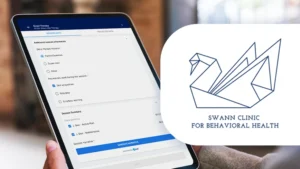As Applied Behavior Analysis (ABA) providers navigate the Coronavirus pandemic, business continuity challenges, and unpredictable circumstances that may prevent care progress in the weeks to come, telehealth is a great option many clinicians and medical practices are considering and in some cases, already transitioning to. Telehealth technology has been on the rise for years, providing patients quick and secure access to certified-medical professionals using telecommunication technology and videoconferencing, for medical consultation, diagnosis and treatment of non-emergency conditions.
In the ABA field, telehealth could help with remote service delivery, but there are many considerations to take into account to ensure practices are set up correctly and securely to provide telehealth services, and to ensure you will be paid if switching to this service delivery model. Let’s dig into all of these details to help you navigate the opportunities and challenges of transitioning or introducing ABA telehealth to your practice.
Funding Source, Verification of Benefits, and Authorization Requirements
First things first, you must have approval from each of your funding sources to provide services via telehealth and have a clear understanding of your reimbursement rates, which in most cases, are different for telehealth than for in-person treatment. CentralReach has seen scattered feedback across the nation wherein payors are providing this approval.
Start by reviewing your payor contracts and contacting your payors to make any necessary adjustments, update fee schedules, and gain insights into any other pertinent information or specific requirements to consider. For example, you may need to document or collect certain information for your telehealth sessions that may not apply for face-to-face therapy sessions. There could also be specific systems or software solutions payors may require you to use. Going over these details will enable you to determine whether or not you will be able to successfully bill and get paid for telehealth services, as well as ensure that you don’t face recoupments during a payor initiated audit.
Once you get approval from payors, the next step is to confirm your clients have the necessary coverage under their individual insurance policies. For this, you need to reverify the client's benefits and review their authorizations to ensure telehealth services are covered and the right service codes and modifier details are included in their authorizations.
In summary, even if the payor has given you approval to provide ABA services via telehealth, this does not mean clients are necessarily covered. Reverification of benefits and authorization updates will set you up for successful billing down the line.
Telehealth Software, Devices, & Security Considerations
As detailed above, payors may have specific platforms they want you to work with to deliver telehealth services. The key here is that the video-conferencing solution must be HIPAA-compliant. You can verify this by asking vendors to confirm, or even share, their Business Associate Agreement (BAA). There may be software exceptions pertaining to HIPAA-compliant telehealth during the COVID-19 pandemic. However, if you want to continue using this technology in the future, consider implementing a compliant solution from the start.
It’s important to note that devices are not HIPAA-compliant, but instead, the software solutions (video conferencing software, practice management software, etc.) used via those devices are the ones that have to adhere to compliance and regulations.
If you are using an Applied Behavior Analysis practice management software or ABA electronic data collection, you may have the advantage to transition to telehealth because you might already have video conferencing devices. Otherwise, you may need to supply reliable devices to your teams. Secure your investment by considering high quality device manufacturers and warranties when coordinating these purchases (your practice’s software company may even be able to provide you with a list of approved devices to aid you in your purchase decision). Consider engaging with mobile device management companies for more robust guidelines.
If you are using a tablet for electronic data collection, providers may have limitations for video conferencing, as it would be difficult to have more than one screen open at a time for the various systems needed to conduct the session. Using multiple monitors to have all the necessary screens open may be the most efficient way to conduct ABA telehealth. Help your teams by supplying them the equipment they need from the start for a successful rollout. Additionally, make sure you review your security policies and procedures to ensure that they are updated to reflect your use of this new clinical tool.
Care Delivery & Policies
Payor contracts should specify the billing codes, modifiers, and services approved for telehealth, but as a practitioner, you should consider which therapy is appropriate without face-to-face interaction based on each client’s specific circumstances and needs. You should review the Ethical Considerations in the Design and Implementation of a Telehealth Service Delivery Model and the Behavior Analyst Certification Board’s (BACB) guidelines (p. 22), and Professional and Ethical Compliance Code for Behavior Analysts (Code) for specific protocols for Board Certified Behavior Analysts (BCBAs) to determine what is appropriate for telehealth. There may be treatments that are more hands-on and could not be performed using telehealth, and providers should analyze that in detail on a case by case basis. Additionally, a Patient Support Person (PSP) may always need to be available to support the therapy session and acknowledge service disclaimers before the session begins. These specific details may also be included in your payor contracts and should be tracked for compliance purposes.
To simplify the rollout of services and ensure all staff are clear on the do’s and don’ts, develop clear policies and/or checklists for your teams. Some items may include:
-
Prohibit the remote clinician, who is not face-to-face with the client, to participate or conduct a telehealth session from a public area, such as restaurants, coffee shops, etc.
-
The remote clinician should aim to be in a private office or room without any other participants, to protect the client’s confidentiality. Any exceptions must be disclosed and acknowledged by the client prior to starting the session.
-
Readout service disclaimers to legal guardians before starting every session.
-
Complete and document personal identification checks before starting every session (verify client’s address, zip code, etc)
-
Establish emergency situation guidelines.
-
Seek parental/guardian consent before starting every session, especially when exceptions are made.
-
Prohibit public internet connections.
-
Evaluate whether or not recording would be allowed based on your own practice needs.
How the CentralReach Software Can Help You Transition to Telehealth
The CentralReach software has many built in features that will enable you to quickly and effectively transition and properly track and bill for telehealth services, including:
-
Set up telehealth service codes and fee schedules based on your payor’s contracts.
-
Quickly identify and track telehealth clients, appointments, providers, billing codes and more for effective reporting and analysis using custom labeling functionality across the system.
-
Collect data electronically and report it in real-time to all necessary stakeholders to keep clients progressing in their treatment plans.
-
Comply with payors’ requirements developing telehealth session notes for providers to complete upon every session to effectively track and record all necessary information and keep all documentation linked to the client's records.
-
Continue billing processes submitting all claims electronically and billing more frequently to improve cash flow in this time of crisis.
-
Continuously and securely communicate with legal guardians via the Client Portal.
-
Develop a custom course to transition care delivery to telehealth through CentralReach’s Learning Management Solution train and track learner's progress virtually, while maintaining social distancing and avoiding large gatherings, as recommended by the Centers for Disease Control and Prevention (CDC).
In Summary...
In this difficult and unpredictable situation, clinicians need to leverage technology now more than ever to ensure that they can continue to support the millions of individuals on the autism spectrum. In these challenging times, minimizing the disruption to the crucial work that behavior analysts conduct on a daily basis is at the heart of CentralReach’s mission. By embracing technology to provide quality and personalized care via telehealth, your ABA practice can quickly help your clients avoid the lifetime repercussions of missing the critical behavioral therapy sessions they depend on to live richer, more independent lives.
For more information on how to navigate your ABA practice and limit disruptions to your care delivery model during the coronavirus pandemic, click here.
About the Author

Dr. Will Brandon, Ph.D., BCBA-D, LBA
Learning ARTS Corporate Officer-President and CEO
Dr. Will Brandon is the founder of Learning ARTS and has been working with children with autism and other developmental disabilities for the past 25+ years. In addition to a Board-Certified Behavior Analyst – Doctorate, Dr. Brandon has a Doctorate in Early Education (ABA Emphasis), dual Master’s degrees in Special Education and Psychology, and a Bachelor's degree in Psychology. He is also a Licensed Behavior Analyst in the State of Nevada, a Nationally Board-Certified Teacher in Special Education, and holds several California Teaching Credentials.
Dr. Brandon has been recognized for teaching excellence by the United States Congress and by the State of California. He has also sat on several state and local boards including the Superintendent's Autism Advisory Committee (Department of Education) that helped develop protocols for school based services for children with autism.
In addition to his work with Learning ARTS, Dr. Brandon has been an adjunct professor in Behavior Analysis and Assessment, Gifted Education, and Mathematics Instruction. Dr. Brandon additionally has done several presentations and publications; recently coauthoring the California Association of Behavior Analysis Practice Brief on Telehealth.
Reminder: These links are being provided as a convenience and for informational purposes only; they do not constitute an endorsement or an approval by CentralReach of any of the products, services or opinions of the corporations, organizations, or individuals. CentralReach bears no responsibility for the accuracy, legality or content of the external sites or for that of subsequent links. Contact the external sites for answers to questions regarding their content.
About CentralReach
CentralReach is the leading provider of Autism and IDD Care Software, providing the only complete, end-to-end software and services platform that helps children and adults diagnosed with autism spectrum disorder (ASD) and related intellectual and developmental disabilities (IDD) - and those who serve them - unlock potential, achieve better outcomes, and live more independent lives. With its roots in Applied Behavior Analysis, the company is revolutionizing how the lifelong journey of autism and IDD care is enabled at home, school, and work with powerful and intuitive solutions purpose-built for each care setting.
Trusted by more than 200,000 professionals globally, CentralReach is committed to ongoing product advancement, market-leading industry expertise, world-class client satisfaction, and support of the autism and IDD community to propel autism and IDD care into a new era of excellence. For more information, please visit CentralReach.com or follow us on LinkedIn and Facebook.
Media Contact:
CentralReach
pr@centralreach.com






